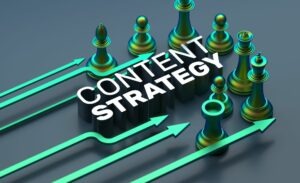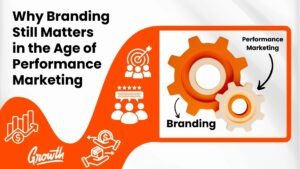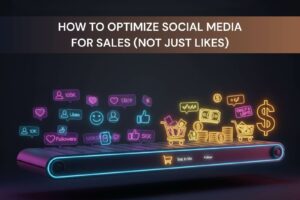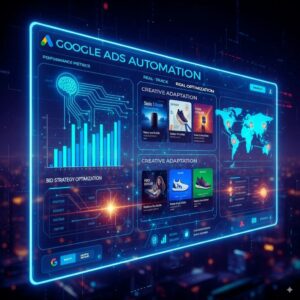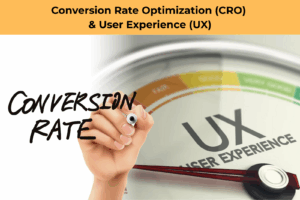Let us guess, you’ve tried Facebook ads and lost money, posted consistently on Instagram for months with nothing to show for it, you took one look at TikTok and thought, “Nah, I’m good,” and you’re starting to wonder if this whole “digital marketing” thing is just a scam designed to separate you from your cash.
The truth is, most of what you’ve tried probably was a waste of time and money. But that’s not because digital marketing doesn’t work, it’s because you most likely didn’t have the right strategy in place.
But heed this word of caution, even with lackluster results, it’s important not to abandon your efforts yet. “Why?,” you might ask, as you look at that dropping ROAS number in your ads manager. Well, the data speaks for itself:
- Digital advertising now accounts for over 75% of total media ad spending worldwide, marking a significant shift in how businesses allocate their marketing budgets.
- In the U.S., digital ad spend has reached $317 billion in 2025, reflecting an 11.6% growth and comprising 74.4% of total ad spend in the country.
- The market value of digital marketing is predicted to grow at a compound annual growth rate of 13.6% until 2033.
In short…there’s a lot of money being invested in the space simply because it works! (As long as you have the right plan in place).
Whether you’re running a local service business, a niche e-commerce brand, or a DTC product that deserves more attention, you can’t afford to keep guessing your way through digital marketing. The good news? You don’t have to. This guide was built to fix exactly that.
Below, we break down what’s working right now, what’s outdated, and how to build a plan that won’t waste your time, money, or sanity.
Grab your overpriced hipster coffee (or whatever caffeinated drink you prefer) and let’s dive in.
What Makes Digital Marketing Different in 2025?
If you’re still marketing like it’s 2020, that might explain why things feel…off. The digital arena has changed fast and keeps changing faster. What worked even two years ago might already be collecting digital dust.
Here’s what’s different in 2025 and why your strategy needs to catch up.
AI Is Everywhere But Real Connection Still Wins
AI tools like ChatGPT, Claude, and Grok can write content faster than you can spell “SEO.” And sure, they’re great for outlines, research, and speeding up production. But the truth is AI-generated content isn’t special anymore.
The web is flooded with blogs that read like they were written by an over-caffeinated intern with no soul. They’re mostly now generic, bland, unmemorable, and guess what? Your audience can tell.
That’s why the brands that stand out now still sound human. They sound like someone, not just something.
They tell stories. They have perspective. They make readers feel seen. That’s not something AI can replicate (at least not yet).
Ever read a product description that made you actually want to buy? Odds are, it didn’t say “our revolutionary solution leverages industry-leading synergy.” It spoke to your real world pain points, showed you the way to improve your life, and delivered.
Tip: Use AI as a teammate, not a ghostwriter.
- Let it help you outline blogs.
- Use it to brainstorm hooks, subject lines, or angles.
- Run your ideas through it for feedback or structure.
But don’t let it write your entire strategy. You still need to inject voice, tone, and insight. That’s the good stuff (and the stuff that still keeps us employed).
Privacy Rules Got a Makeover
Remember when retargeting used to be easy? A few pixels, a broad audience, and suddenly your ads were following potential customers everywhere. That’s not the game anymore. In 2025, digital privacy laws have tightened, third-party cookies are being phased out, and platforms like Apple have already locked things down with stricter tracking policies.
What this means is simple, the days of easy tracking are behind us. Retargeting still exists, but it’s not nearly as reliable unless you own your data.
That’s why smart businesses are shifting their focus to first-party data…the stuff your audience voluntarily gives you, like email addresses, purchase history, and engagement behavior. Instead of relying on rented data from ad platforms, you build your own list, your own insights, and your own direct line to the people who actually care about what you’re offering.
Why do this? It’s not just more sustainable, it’s more accurate. And in a world where attention is limited and trust matters more than ever, collecting and using data with care is your competitive edge.
If your growth plan doesn’t include a strategy for capturing and using first-party data, it’s time to rethink it.
Tip: Build trust with transparency.
Tell users why you’re asking for their info, how you’ll use it, and what they’ll get in return. It’s a simple shift that builds loyalty and better conversion rates.
Search Has Gone Conversational (and a Little Weird)
If it feels like SEO has gotten harder, you’re not wrong. People aren’t typing in one-word searches anymore. They’re asking Google full-blown questions like, “best protein bars that don’t taste like cardboard,” or “affordable bookkeeping software for freelance designers who hate spreadsheets.”
Search behavior in 2025 is more natural, more specific, and often voice-driven. That means if your content isn’t matching how real people talk—or what they actually mean when they search—it’s probably not showing up.
The old SEO tricks like keyword stuffing or chasing high-volume, vague phrases don’t cut it anymore. Now, it’s about intent. What is the person really looking for? What do they want to know, do, or buy?
If your content answers that clearly, you’ve got a shot. If not, even the best-written blog post might get buried.
Tip: Write for your audience (humans).
Stop writing for algorithms and start writing for humans. That’s what Google’s looking for now, too.
Mobile-First and Scroll-Stopping or Bust
Your audience is on their phone. In bed. At lunch. At red lights (don’t do that). If your content doesn’t load fast, look good, and deliver value in 3 seconds or less, you’re out.
And if you’re not using short-form video? You’re not even in the game. Reels, Shorts, TikToks… yes, they take effort. But they also take attention. And attention is the new currency.
Forget polished perfection focus on clarity, authenticity, and making them stop scrolling.
Digital in 2025 is louder, faster, and more competitive than ever. But that’s not a bad thing, it just means lazy marketing doesn’t work anymore. If you’re willing to adapt and play smart, this is your edge.
Tip: Think before you post.
Before you post anything, ad, video, or story, ask yourself…would I stop scrolling for this? If the answer’s no, go back and make it sharper, simpler, or more surprising. In 2025, attention must be earned.
Core Digital Marketing Strategies That Work in 2025
1. Search Engine Optimization (SEO)
Search engine optimization is the quiet workhorse behind sustainable growth. In 2025, it’s still one of the best ways to get consistent, high-quality traffic that doesn’t cost you every time someone clicks.
But ranking in Google has changed. No longer can we mere marketing nerds keyword stuff or pump out shallow blog posts anymore. These days, it’s about proving you know what you’re talking about and that you’re someone worth listening to. That’s where E-E-A-T comes in.
Google now evaluates content using four core signals: Experience, Expertise, Authoritativeness, and Trustworthiness. If your content doesn’t demonstrate those things, it’s less likely to rank no matter how well-optimized it is.
What does that look like in real life?
- Sharing real insights and experiences, not just summaries of other articles
- Highlighting your credentials (or your brand’s) where relevant
- Earning mentions and backlinks from reputable sources
- Writing content that’s helpful, honest, and actually answers the question being searched
Pair that with smart keyword targeting, great user experience, and mobile optimization, and you’re setting yourself up for the kind of search traffic that compounds over time.
Bottom line: SEO still works but only if you earn it. And once you do, it pays off around the clock.
2. Paid Advertising (Google & Meta Ads)
Paid ads are still the fastest way to drive traffic and test offers but in 2025, the rules of the game have changed. You can no longer chase hacks or squeeze performance out of one “magic” ad. The brands that win today are the ones that combine standout creative, strong copy, and clean data.
How do you do that?
Let’s start with the obvious…attention is the currency now. If your creative doesn’t grab someone in the first few seconds, the rest doesn’t matter. That means strong visuals and clear value, all tuned to your audience’s awareness level.
What does that mean? Not every customer is ready to buy the first time they see your ad. Some don’t even know they have a problem yet. Others are actively comparing options. And a few are just waiting for the right offer to hit.
If you’re running the same ad to all of them, you’re losing money.
So match the message to the mindset:
- Unaware: lead with a hook that taps into emotion or a pain they feel but haven’t named
- Problem-aware: speak directly to their frustration or challenge
- Solution-aware: introduce what makes your approach unique
- Product-aware: showcase your offer with proof and urgency
- Most-aware: remind them why now’s the time to act
When your ads meet people where they are, they click. And when your funnel reflects that awareness journey, they convert.
But great creative isn’t enough if your targeting is off or your tracking is a mess. With privacy changes and tighter platform rules, your first-party data matters more than ever. Upload your customer lists. Segment them. Build lookalikes. Use your CRM to connect the dots.
And don’t just run traffic to your homepage. Paid ads work best when the journey is dialed in. Think ad to landing page to offer to your desired action. Every step should feel like one cohesive experience, not a wild redirect.
Bottom line: Paid ads still work but you can’t wing it anymore. Smart brands treat it like a system: creative testing, audience targeting, and data feedback all working together to grow profitably. The shortcut is gone. The strategy isn’t.
3. Local SEO + Google Business Profile
If you run a local business and haven’t touched your Google Business Profile in months (or ever), you’re missing the easiest, highest-intent traffic available.
Why? Because when someone searches for “[your service] near me,” your profile is where they decide whether to call you or your competitor. It’s your first impression. And in many cases, it’s your only shot.
Your Google Business Profile needs to be up-to-date, reviewed regularly, and treated like a living sales asset. That means accurate info (hours, services, location), fresh photos, real updates, and consistent review management. Google rewards activity, and so do potential customers.
Last, reviews matter. A lot. And not just for ranking, they’re a trust signal. So make it easy for happy customers to leave them, and make sure you respond (yes, even to the grumpy ones).
Bottom line: If you’re a local brand, your Google Business Profile is your homepage whether you like it or not. Keep it active, keep it accurate, and you’ll win clicks before people ever reach your site.
4. Email Marketing & Automation
Email isn’t dead, you just haven’t written one worth opening yet.
Today, email remains one of the highest ROI channels in your entire marketing toolkit. But it only works if you stop treating it like a digital coupon dispenser.
If all your emails say is “20% off. Buy now,” don’t be surprised when your open rates tank and your list disengages.
Good email marketing is about value first, timing second, and selling third.
That means not blasting your whole list with the same thing. Nurture new leads with a welcome sequence. Re-engage past customers with a smart check-in. Celebrate milestones. Educate. Entertain. Build a relationship that makes the next sale feel like a no-brainer.
Bottom line: Email still works but only if you treat it like a conversation, not a transaction. Speak clearly, send with purpose, and watch what happens when your list actually likes hearing from you.
5. Social Media (Organic + Paid)
You don’t have to go viral to win on social. But you do need a plan.
In our (dis)connected world, social media is less about being everywhere and more about being intentional. If you’re posting just to check a box, or only showing up when there’s a sale, don’t expect much in return.
The brands that grow are the ones who show up consistently, speak directly to their audience, and use each platform for what it’s actually good at. Not every channel needs to do everything—but each one has its own superpower if you use it right:
- Instagram is still your visual storefront. Think short-form video (Reels), bite-sized storytelling, product showcases, and brand-building through aesthetics. Great for connecting emotionally, showing behind-the-scenes moments, and nurturing community.
- TikTok is where attention starts. It’s discovery-first, algorithm-driven, and built for creators who can educate, entertain, or inspire quickly. Don’t overthink production, focus on clarity, hooks, and relatability. This is your chance to be seen by people who’ve never heard of you.
- Facebook still delivers for local service businesses, community engagement, and paid ads with strong intent. Groups, retargeting, and native content (not just links) perform well. Yes, it’s less cool but it’s still powerful if your audience is over 30.
- LinkedIn has become a platform for thought leadership, personal brand building, and founder-driven storytelling. If your business has a mission, a team, or expertise to share this is where you make it matter.
- X (formerly Twitter) is for real-time takes, sharp ideas, and industry positioning. Best used for networking, trend-hopping, and participating in bigger conversations. Don’t expect to sell here, expect to influence.
On the paid side, social is still one of the most efficient ways to get in front of new eyeballs. But performance comes down to creative and audience match, not platform hacks. Testing matters. Messaging matters. Scroll-stopping visuals matter.
Testing is key. You don’t need to spend thousands but you do need to be willing to test different hooks, headlines, visuals, formats, and calls to action. What works for one audience, product, or platform won’t work for another.
Paid social in 2025 is less about tricks and more about alignment between your creative, your offer, your targeting, and the journey you’re leading people through.
If just one of those is off, the whole thing falls flat.
Bottom line: Social is a conversation. Show up, provide value, and be worth following. Whether organic or paid, attention goes to brands that know how to connect.
6. Content Marketing
Your audience has questions. They’re googling them, asking ChatGPT, scrolling through TikTok hoping someone will just explain it simply. If you can be that someone consistently, you win their attention first and their business later.
The content that builds real authority is the stuff that helps people solve actual problems. Think about the questions your customers ask you over and over. The objections they have. The misconceptions they bring to the table. That’s your content goldmine.
If you sell skincare, don’t write “10 Steps to Perfect Skin.” Write “Why Your $80 Serum Isn’t Working (And It’s Probably Not the Product’s Fault).”
See the difference? One sounds like homework. The other sounds like someone who gets it.
Short-form videos are where attention lives now so get on YouTube Shorts, TikTok, and Instagram Reels. And before you say you’re “not a video person,” you don’t need Hollywood production value. You need clarity, authenticity, and something worth watching:
- FAQs in 60 seconds or less. Take the questions people ask constantly and answer them on camera.
- Behind-the-scenes moments. People buy from people they trust. Show your process, your workspace, the real stuff that makes you human.
- Product demos that attract eyeballs. Instead of listing features, show the transformation. Don’t tell me your software has “advanced reporting capabilities.” Show me how it turned a 3-hour task into a 10-minute one.
The best part? One good video becomes content for weeks. That 60-second FAQ turns into a blog post, an email, a carousel post, and a podcast segment. Start with one solid piece of long-form content, then break it down, pull key points for social posts, turn the main idea into video, extract quotes for LinkedIn, use data for infographics. The key is adaptation, not duplication.
Bottom line: Content marketing in 2025 means being helpful first and promotional second. Show up consistently with answers, insights, and authenticity. The sales will follow, but the trust has to come first.
7. Influencer & UGC Marketing
People trust their friend’s recommendation over almost anything else. They trust that random person on TikTok reviewing your product over your five-star website testimonials. And they definitely trust authentic content over anything that screams “this is an advertisement.” After all, there’s a reason why referrals are still the best way to attract business.
That’s why influencer marketing and user-generated content (UGC) work so well (when done right).
But let’s be honest about what “done right” actually means in 2025.
The era of paying mega-influencers $50K to post one perfectly staged photo is mostly over. What works now is partnering with micro-influencers who actually use and love what you’re selling, or better yet, turning your happy customers into your content creators.
Micro-influencers (1K-100K followers) often have better engagement rates, more authentic audiences, and cost a fraction of what the big names charge. More importantly, their followers actually trust their opinions because they haven’t sold out to every brand that slides into their DMs.
But there is one area where most brands mess up…they try to control everything. They send detailed scripts, demand specific angles, and basically turn authentic creators into human billboards. This results in content that feels forced, fake, and forgettable.
Instead, find people who are already talking about products like yours. Reach out with a simple offer such as free product in exchange for honest feedback. No scripts, no mandatory posts, just “try this and share what you think.”
The best influencer partnerships feel like recommendations, not advertisements.
On the UGC side, your customers are already creating content about your brand such as reviews, unboxing videos, before-and-after photos. The smart move is to make it easy for them to share and even easier for you to use that content.
Create a branded hashtag. Offer incentives for posts. Feature customer content on your own channels. Run contests that encourage creative submissions. Turn your email follow-up into an invitation to share their experience.
The content your customers create is often more convincing than anything you could produce in-house because it’s real. It shows your product in actual use, by real people, solving real problems.
Bottom line: People trust people more than logos. Partner with micro-influencers who genuinely connect with their audience, or turn your happy customers into content creators. Just keep it authentic (overproduced influencer ads feel fake and perform worse than the real thing).
8. Website Optimization & CRO
Your website isn’t a digital brochure. It’s your 24/7 salesperson, and right now, it’s probably doing a terrible job. Well, maybe more like mediocre.
Most small business websites make visitors work way too hard to figure out what you do, why it matters, and how to buy. If someone lands on your homepage and can’t understand your value proposition in 5 seconds, they’re gone. And they’re not coming back.
Here’s a quick list on what kills conversions:
- Slow load times
- Confusing navigation
- Buried contact info
- And weak calls-to-action (or even worse, hidden ones!)
Let’s start with speed. If your site takes more than 3 seconds to load, you’re losing money with every passing millisecond. Mobile users are even less patient. Test your site speed on Google PageSpeed Insights and fix what’s broken. Compress images, clean up plugins, get better hosting if you need to.
Your mobile experience matters more than your desktop one. Most of your traffic is coming from phones, so if your site looks like garbage on mobile or requires pinching and zooming to navigate, you’re basically telling potential customers to go somewhere else.
Now let’s talk about conversion elements that actually work:
- Clear, specific calls-to-action. Not “Learn More” or “Click Here.” Try “Get Your Free Quote,” “Book a 15-Minute Call,” or “Download the Pricing Guide.” Tell people exactly what happens when they click.
- Service explanations that normal humans can understand. Stop hiding behind industry jargon. Explain what you do, who it’s for, and what results they can expect. Use the words your customers use, not the ones that sound impressive.
- Social proof that doesn’t look fake. Real customer reviews, recognizable logos, actual case studies with specific results. Not stock photos of people in suits pointing at charts.
- Trust signals that matter. Security badges, contact information, about pages with real photos, clear return policies. Anything that makes you feel less like a fly-by-night operation.
- Live chat or chatbots can help, but only if they actually help. If your bot just frustrates people with canned responses, ditch it. If your live chat is never actually live, don’t promise it.
Bottom line: Your website should make it ridiculously easy for people to understand what you do and take the next step. Fast load times, mobile optimization, clear messaging, and obvious next steps. Everything else is just decoration.
How to Build a Digital Marketing Strategy for Your Small Business
Most small businesses treat digital marketing like throwing spaghetti at the wall. Post something on Instagram, boost a Facebook ad when sales are slow, send an email blast when they remember. Then they wonder why nothing seems to stick.
Random acts of marketing don’t build businesses. Strategy does. But strategy doesn’t have to be complicated. It just has to be intentional. Here’s a great way to get started:
- Start with Goals That Actually Mean Something
“I want more traffic” isn’t a goal, it’s a wish. “Get 50 qualified leads in the next 30 days” is a goal. It’s specific, measurable, and gives you something to optimize toward.
In other words it’s a S.M.A.R.T. goal:
- Specific: Clear and well-defined (What exactly do you want to accomplish?)
- Measurable: Quantifiable (How will you measure success?)
- Achievable: Realistic and attainable (Can this actually be done?)
- Relevant: Aligned with broader goals (Does this matter right now?)
- Time-bound:Has a deadline (When will it be completed?)
One very important thing to keep in mind that some people seem to ignore to their own detriment…your goals should connect directly to revenue. More email subscribers only matter if those subscribers buy. More social followers only matter if they convert to customers. More website traffic only matters if it leads to inquiries.
Pick 1-2 primary goals per quarter and build everything around hitting them. More goals don’t make you more successful, they make you more scattered.
- Map Your Customer’s Journey (It’s Not About You)
Your customers don’t wake up ready to buy from you (though that would be nice!). They move through stages. They realize they have a problem, research solutions, compare options, then finally make a decision.
Your job is to meet them where they are, not where you want them to be.
- Awareness stage: They know something’s wrong but haven’t named the problem yet. Content here should educate and help them understand what they’re dealing with.
- Consideration stage: They’re actively looking for solutions. This is where you demonstrate expertise, show your approach, and prove you understand their situation.
- Conversion stage: They’re ready to choose but need final reassurance. Case studies, testimonials, clear next steps, and risk reversal matter here.
Most businesses skip straight to conversion and wonder why their ads don’t work. You can’t ask someone to marry you on the first date.
- Pick Your Battles (You Can’t Be Everywhere)
The biggest mistake small businesses make is trying to be on every platform doing every tactic. You end up mediocre everywhere instead of excellent somewhere.
Pick 2-3 channels that make sense for your business and your audience. If you’re a B2B service business, maybe it’s Google Ads, LinkedIn, and email. If you’re selling products to millennials, maybe it’s Instagram, TikTok, and SMS marketing.
The channel matters less than your ability to execute consistently and measure results. Better to dominate two channels than to half-ass five.
- Think in Campaigns, Not Random Posts
Instead of posting whenever you feel like it, plan monthly themes that align all your marketing efforts.
January might be “New Year, New Systems” if you sell productivity software. March could be “Spring Cleaning Your Finances” if you’re an accountant. July might be “Summer Beauty Prep” if you sell skincare.
When you align your blog content, social posts, email campaigns, and ad spend around one focused message, everything amplifies everything else. Your Instagram post reinforces your email, which supports your blog post, which connects to your ad campaign.
- Measure What Matters, Ignore the Rest
Vanity metrics will lie to you. Likes, follows, and page views feel good but they don’t pay bills.
Focus on metrics that connect to revenue such as lead conversion rates, cost per acquisition, email open rates, sales attribution, customer lifetime value.
Use tools like Google Analytics 4, your CRM, and platform-specific dashboards to track what’s working. But don’t get lost in the data, pick 3-5 key metrics and check them weekly, not hourly.
Most importantly, be willing to kill what’s not working. That Facebook campaign that’s getting lots of engagement but zero sales? Cut it. That blog content that’s taking hours to write but driving no traffic? Stop.
Strategy isn’t complicated, but it is intentional. Set clear goals, understand your customer’s journey, focus on fewer channels, plan cohesive campaigns, and measure what actually drives revenue.
Top Mistakes That Kill Your Marketing (And How to Avoid Them)
Let’s talk about the mistakes that are costing you money, time, and your sanity. These aren’t small oopsies, they’re the kind of strategic blunders that can tank an otherwise solid business.
- Trying to Do Everything at Once
You see a LinkedIn post about TikTok success stories, so you start making videos. Then you read about email marketing ROI, so you launch a newsletter. Next week it’s Pinterest, then podcasting, then whatever Gary Vaynerchuk is shouting about.
Stop. This isn’t diversification, it’s desperation.
When you spread yourself across every channel, you’re not maximizing opportunities, you’re guaranteeing mediocrity. You’ll post inconsistently, message poorly, and measure nothing because you’re too busy jumping to the next shiny object.
Pick 2-3 channels. Master them. Then, and only then, consider adding more.
If you take just one thing away from this guide it should be this:
Do less, but do it better.
- Making Decisions with Your Feelings Instead of Your Data
“I don’t like TikTok, so our audience probably doesn’t either.”
“Instagram posts with faces perform better because that’s what I prefer.”
“Let’s boost this post because I think it’s clever.”
Your personal preferences aren’t market research. Your gut feelings aren’t analytics. And your assumptions definitely aren’t facts.
The campaign you think is boring might be your highest converter. The audience you assume won’t engage might be your most profitable. The platform you personally avoid might be where your customers actually hang out.
The game today is all about data. Just ask Zuckerberg why he built some mega-mind complex out in Utah that’s collecting everyone’s data and feeding it through AI. It’s important, it’s powerful, and it’s your best bet in scaling your business.
That’s why you should always check your data before you make changes. And if you don’t have data yet, get some before you make any big decisions.
- Obsessing Over Followers Instead of Focusing on Revenue
10,000 followers who never buy anything is worse than 1,000 followers who actually become customers. But most business owners still chase vanity metrics like they’re building a personal brand instead of growing a business.
If you’re in this spot, grab a Post-It note, write these three bullet points on it, stick it to your mirror and repeat it three times every morning before you brush your teeth:
- Followers don’t pay bills.
- Engagement doesn’t cover payroll.
- Viral posts don’t guarantee profit.
Got it?
What matters is how many people move from seeing your content to buying your product. That’s it. If your follower count is growing but your revenue isn’t, you’re building an audience for someone else’s business.
Track metrics that connect to money such as leads generated, conversion rates, customer acquisition costs, lifetime value. Everything else is just entertainment.
- Running the Same Ad Until Everyone’s Sick of It
You found a winning creative and now you’re running it into the ground. Or worse, you never test anything because “it’s working fine.”
Audiences get fatigued. Performance declines. What worked last month might be annoying people this month.
But most businesses don’t test because testing feels risky or complicated. So they stick with their one decent ad until it stops working, then panic when results drop off a cliff.
Test new headlines, images, videos, angles, and offers consistently. Not because what you have is broken, but because you want to find something even better before your current approach burns out.
- Treating Channels Like Islands Instead of an Ecosystem
Your Instagram ad sends people to your website, but your website doesn’t mention your email list. Your email list talks about your blog, but your blog doesn’t promote your lead magnets. Your Google ads land on generic pages that don’t connect to your social proof.
Everything should work together, not compete for attention.
When someone discovers you on TikTok, they should find consistent messaging on your website, in your emails, and across your other touchpoints. Your lead magnet should connect to your email sequence, which should reference your best content, which should naturally lead to your core offer.
Map the journey from discovery to purchase and make sure each step logically leads to the next. Close the gaps and you’ll close more sales.
You’re Now Ready to Build Something That Works
The businesses that win are the ones that show up consistently, speak to real problems, and treat their marketing like a system instead of a series of random experiments.
You don’t need to be on every platform, chase every trend, or spend like a Fortune 500 company. You just need to be intentional about where you focus, honest about what’s working, and willing to adapt when things change.
The strategies in this guide work because they’re built on understanding people, not gaming algorithms. Focus on being useful, trustworthy, and clear about what you offer. Everything else is just tactics.
Start with one or two channels, set real goals, measure what matters, and build systems that compound over time instead of campaigns that burn out in a week.
And remember, the best marketing strategy is the one you’ll actually execute consistently. Perfect plans that sit in your Google Drive don’t grow businesses. Good plans that get implemented do.
Need Help Getting Started?
Want to skip the trial and error and build a marketing strategy that works for your business?
Download our Free Small Business Digital Marketing Plan and get everything you need to create a focused, profitable marketing strategy:
- 30-day action planner with week-by-week tasks
- Channel budget breakdown (so you know where to spend your money)
- Proven templates for content and ads that convert
- Complete tool list with our honest recommendations
- Goal-setting worksheets that connect to real revenue
Wouldn’t it be nice to stop guessing and start growing? Now you can.
Bonus: Top Tools to Help You Execute in 2025 (And What They’re Good For)
You don’t need a massive tech stack, just the right tools for where you are. Here’s a fast breakdown:
Keyword Research
For businesses that want to rank on Google or improve content strategy. Great for SEO planning, content ideas, and seeing what your competitors are doing.
Design & Video
Perfect for non-designers. Use Canva for graphics, CapCut or InVideo for creating scroll-stopping short-form video content without hiring an editor.
Scheduling
If you’re managing multiple social channels, these help you stay consistent and automate posting. Metricool also offers analytics and competitor tracking.
Analytics & CRM
GA4 tracks who’s visiting your site and what they’re doing. Hubspot and Pipedrive help manage leads, automate follow-ups, and turn traffic into sales.
Email Marketing
Klaviyo is a top choice for ecommerce. Mailchimp and MailerLite are great for newsletters, sequences, and building a real relationship with your list.
FAQs
As a rule, 5–10% of your monthly revenue. More if you’re aggressively scaling.
Download Your Free Marketing Plan Checklist
Get everything you need to create a focused, profitable marketing strategy:



